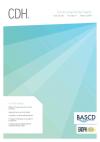Community Dental Health

- Cover Date:
- March 2019
- Print ISSN:
- 0265 539X
- Electronic ISSN:
- 2515-1746
- Vol:
- 36
- Issue:
- 1
Low rates of dental attendance by the age of one and inequality between local government administrative areas in England
doi:10.1922/CDH_4390Salomon-Ibarra05
Objective: To describe child dental attendance (DA) by 1 year of age in England and its relationship with area deprivation.
Basic research design: Analysis of National Health Service data for the 12 months to June 2017. Deprivation was measured
by Index of Multiple Deprivation Rank of Average Score (2015) for upper-tier and unitary local authorities in England (LAs,
n=151). DA rates were calculated for children under 1 year (<1yr) and children aged 1 year and under (≤1yr). A Spearman’s
test assessed strength of association with deprivation. The Slope Index of Inequality (SII) and Relative Index of Inequality
(RII) explored equity. Clinical setting: Upper-tier and unitary LAs in England. Main outcome measure: Attending an NHS
primary care dental service. Results: DA rates ranged from 0 to 12.3% (Median:2; IQR:1.4,3.9) in children <1yr and from
3.7 to 37.6% (Median:10; IQR:7.4,17) in children ≤1yr. DA rates decreased as deprivation decreased (Spearman=-0.25,
p=0.0019 in children <1yr; Spearman=-0.21, p=0.0104 in children ≤1yr). The SII suggested a 2 percentage point difference
in DA rate across the deprivation distribution in children <1yr (SII=-0.02, 95% CI=-0.01,-0.04; p=<0.001); and a 5 point
difference in children ≤1yr (SII=-0.05, 95% CI=-0.02,-0.09; p=0.003). The DA rate in the most deprived LA was 2.1 higher
than the least deprived LA (RII=2.1, 95% CI=1.4,3.2; p=<0.001) in children <1yr and 1.5 higher (RII=1.5, 95% CI=1.2,2;
p=0.004) in children ≤1yr. Conclusions: DA rates were low for all LAs and only partially explained by deprivation. More
deprived LAs were, unexpectedly, more likely to report higher DA rates.
Keywords: Dental Health Services; England; Dental Attendance; Dentistry; Dental Caries
- Article Price
- £15.00
- Institution Article Price
- £
- Page Start
- 22
- Page End
- 26
- Authors
- Candy C. Salomon-Ibarra, Vahid Ravaghi, Kirsty Hill, Colwyn M. Jones, David P. Landes, Alexander J. Morris
Articles from this issue
- Title
- Pg. Start
- Pg. End
- Editorial:‘No simple solutions, no single ingredient’: Systemsorientated approaches for addressing Wicked Problems in population oral health
- 3
- 4
- Dental Public Health in Action: The use of the NICE ten step model to conduct an oral health needs assessment in South Yorkshire and Bassetlaw
- 5
- 8
- Caries-preventive efficacy of a supervised school toothbrushing programme in Northland, New Zealand
- 9
- 16
- Socioeconomic Variation in the association between Malocclusion and Oral Health Related Quality of Life
- 17
- 21
- Low rates of dental attendance by the age of one and inequality between local government administrative areas in England
- 22
- 26
- The relationship between body mass index and oral health status among Saudi adults: a cross-sectional study
- 27
- 32
- The acceptability of fluoride varnish and fissure sealant treatments in children aged 6-9 delivered in a school setting
- 33
- 38
- Interventions to reduce socio-economic inequalities in dental service utilisation – a systematic review
- 39
- 45
- The Boundaries between Caries and Periodontal Diseases. What are the Implications for Education in Dental Public Health? Proceedings of EADPH/SESPO Pre-Congress Workshop held on Wednesday, 17 October 2018 at The Centro Cultural Sa Nostra Congress Cen
- 63
- 86
